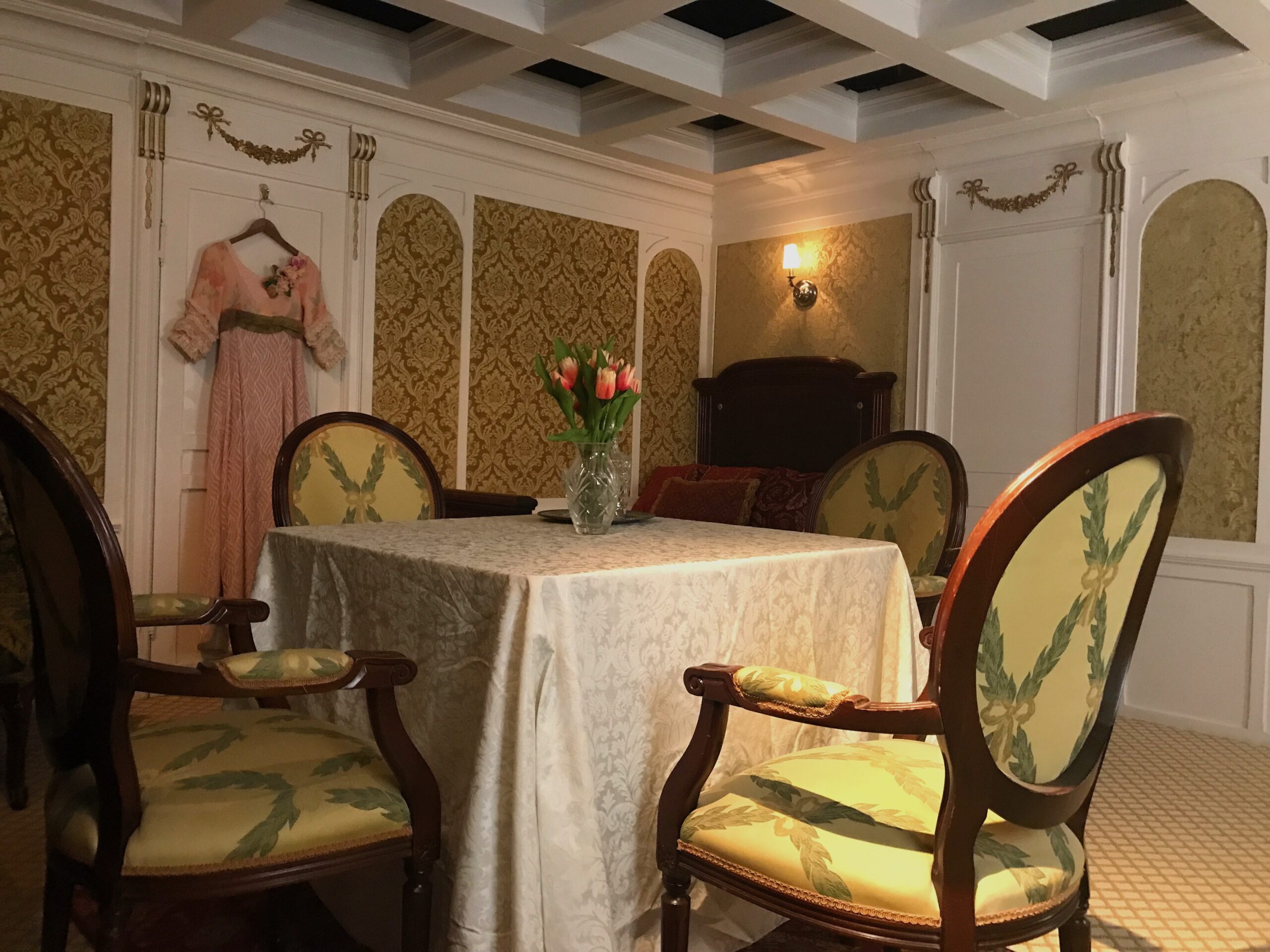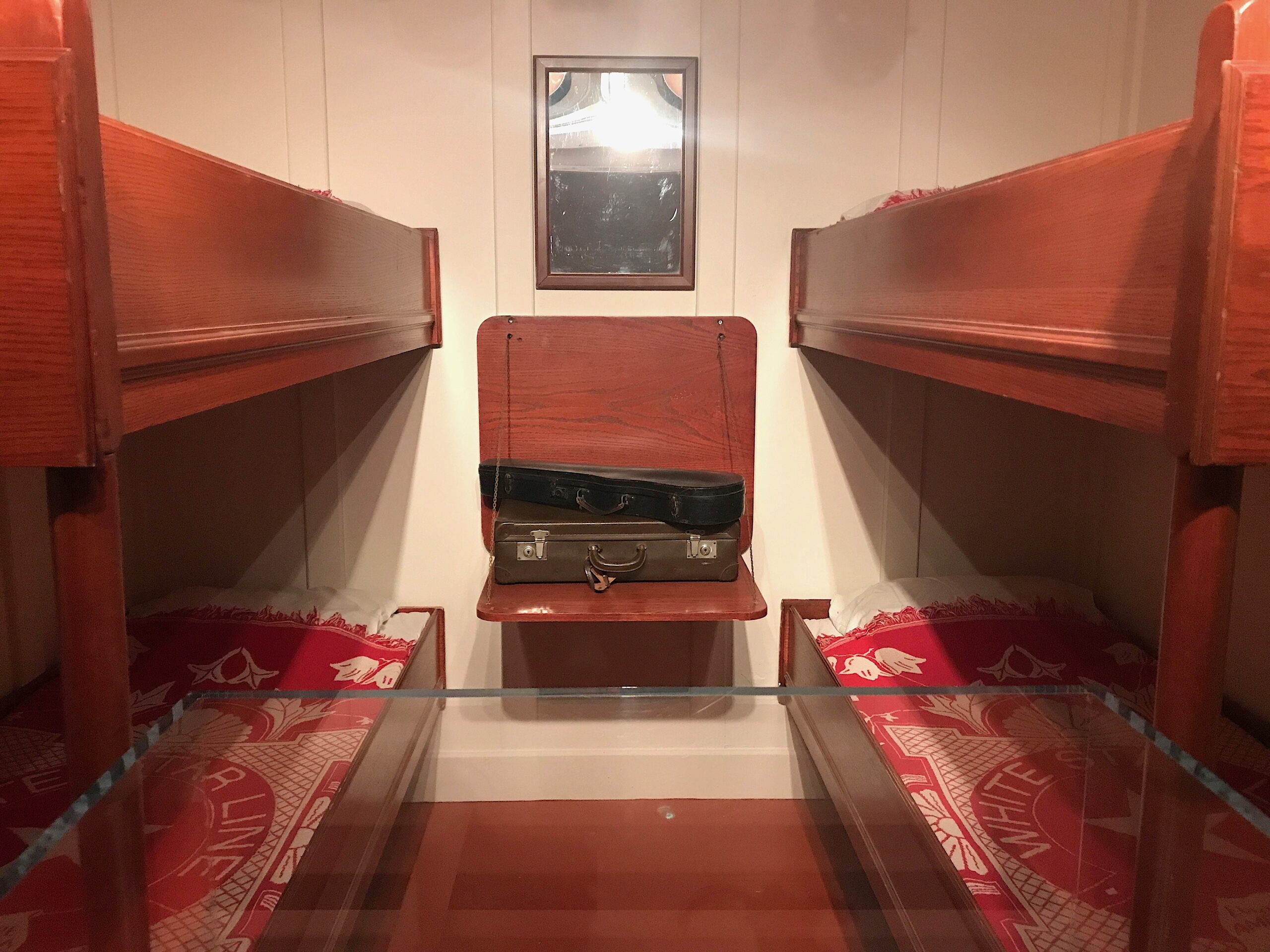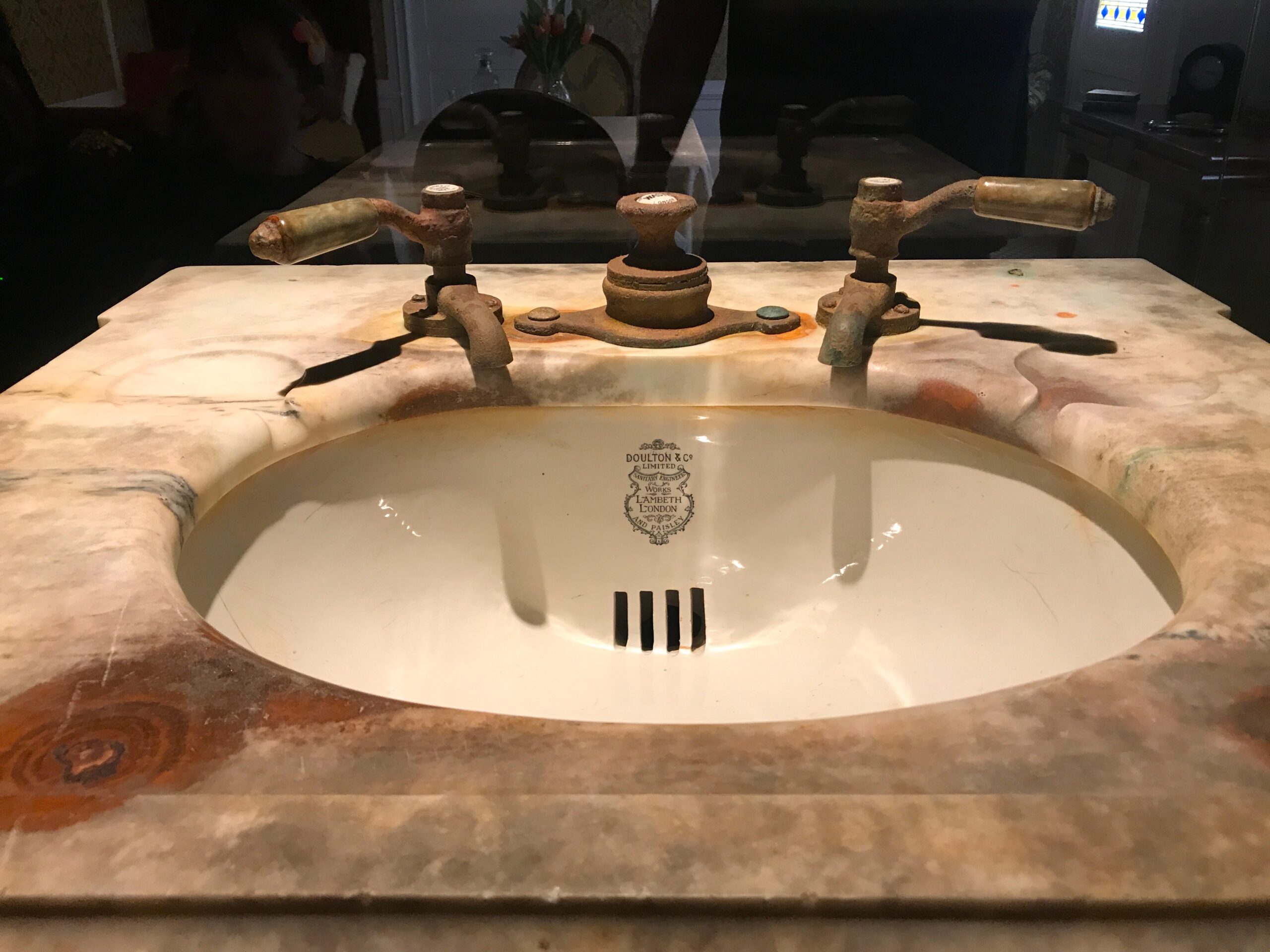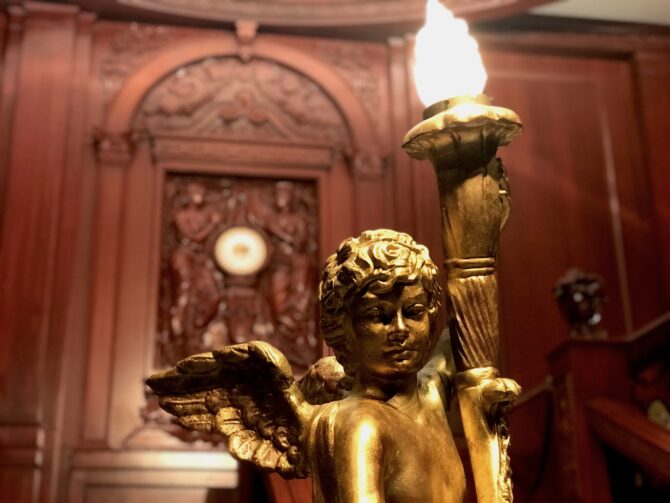We Visited the Titanic Exhibition in Paris
A major exhibition dedicated to the Titanic invites you to retrace the stories of passengers and crew aboard her fateful maiden voyage, in an immersive experience charged with emotion.

Replica of a first class cabin © Sylvia Edwards Davis
Covering more than 2,000 square metres, a maze of spaces feature life-scale reconstruction of the grand staircase, a first-class lounge, the boiler room, the Veranda Café, and more. A unique aspect of the visit is the presence of 260 of the objects recovered during dives conducted by the late Paul Henri Nargeolet, Director of Underwater Research for RMS Titanic. Nargoeolet was one of five people who died aboard the submersible Titan when it imploded underwater last month near the wreck of the Titanic.

View of the exhibition © Sylvia Edwards Davis
Before accessing the main ‘gangway’, visitors are assigned an identity at random, in the form of a replica of a boarding pass. Mine belonged to third class passenger Mrs. Jennie L. Hansen (née Howard), who was returning to America with her husband Claus, back from visiting family in Denmark that they hadn’t seen in twenty years. Naturally I wondered if Jennie would be counted among the survivors. These seemingly small details have a sobering effect, adding a layer of sensitivity to the treatment of the real-life stories of the passengers and crew. The artefacts displayed in the exhibition include ordinary items such as a toothpaste jar, playing cards, and letters, as well as items from the ship such as china, silverware, and furniture. These objects reflect the wide variety of people onboard, as in the grouping of banknotes and coins coming from so many different countries.

Third class cabin on RMS Titanic © Sylvia Edwards Davis
Following that fateful night of April 1912, the remains of the Titanic had been lost to the unfathomable North Atlantic, until a joint French-American expedition located the main sections of the wreckage in 1985, about 1,500 km Northeast of New York at an impossible depth of approximately 12,500 feet (3,800 metres). Since then, eight expeditions supervised by Nargeolet have recovered over 5,500 objects from the site. These relics range from personal effects belonging to the passengers, such as jewellery and clothing, to equipment and furnishings such as the ship’s telegraph and delicate porcelain tableware.

oOver 260 objects on display were recovered from the wreckage © Sylvia Edwards Davis
Having undergone a lengthy recovery and conservation process, regularly inspected and maintained so that they can be preserved for the future, the objects are displayed in specially designed cases, where temperature, relative humidity and light can be controlled to protect them from deterioration. The enterprise naturally raises complex questions about revisiting these highly poignant pieces. The sensitive way in which they are displayed, however, combined with their historical significance and scientific interest, afford a balm to these valid concerns.
RMS Titanic Inc. explains that the ocean floor is a hostile environment and over time any objects on the sea floor, eaten away by bacteria, abraded by sediment, and corroded by salt and acids, will eventually be lost. Through the conservation efforts, visitors from all over the world have the opportunity to bear witness to the human and technical aspects of the disaster.

First-class cabins had hot and cold running water © Sylvia Edwards Davis
The exhibit also features information about the construction of the Titanic, the events leading up to its sinking, and the aftermath of the disaster. Overall, the visit is an educational experience for visitors of all ages. The artefacts and reconstructions are accompanied with panels featuring logbook data, quotes, and photographs. These visual representations, enhanced by the low lighting, sound effects, and accompanying audio-guide, all available in English, help to bring the story to life.

One of the most moving parts of the exhibition was the memorial wall with the names of all souls on board indicating whether they were saved or lost – a solemn reminder of the human cost of the tragedy. As I stood there, reading the names, I couldn’t help but reflect on the fragility of life and the formidable power of the sea. I was uplifted to find that Jennie had indeed made it back home, and it occurred to me that in our time, right now, there are souls out there struggling against these same forces. I was expecting to find the visit interesting, even thought-provoking, but the emotions it brought to the surface came as a surprise. If you have a chance to visit, let me know if it made the same impression, and spare a thought ‘for those in peril on the sea’.
TITANIC
Open every day until 10 September
Paris Expo Métro Ligne 12 – Porte de Versailles
www.titanicexpo.fr
👉 USEFUL TIP : Pick up the audio guide as it adds subtle details not included in the posters. Also, organisers warn that there are no toilettes once you enter the exhibition. Just pretend you are travelling steerage, as the White Star Line provided just two bathtubs for 700 third-class passengers on RMS Titanic!
Lead photo credit : © Sylvia Edwards Davis
Share to: Facebook Twitter LinkedIn Email
More in events in France, exhibition, history, Paris, Titanic
Leave a reply
Your email address will not be published. Required fields are marked *





